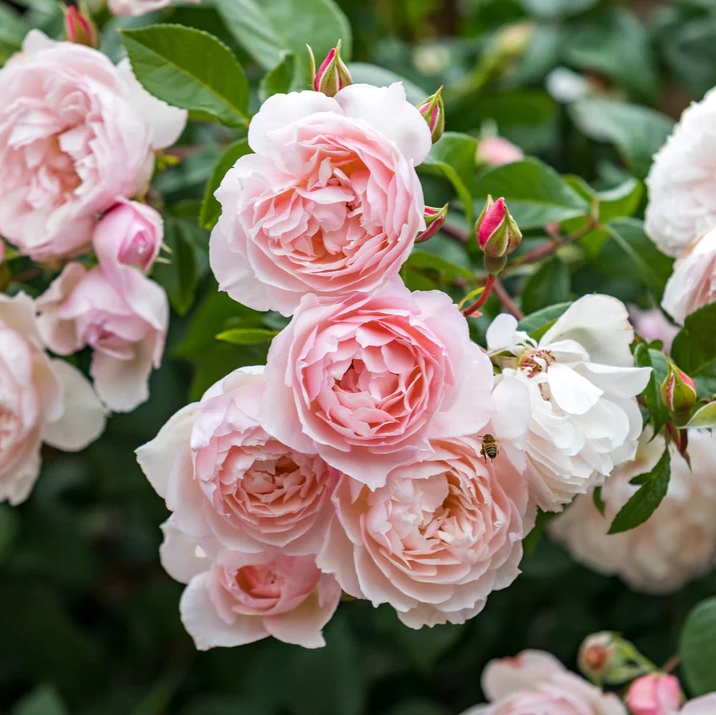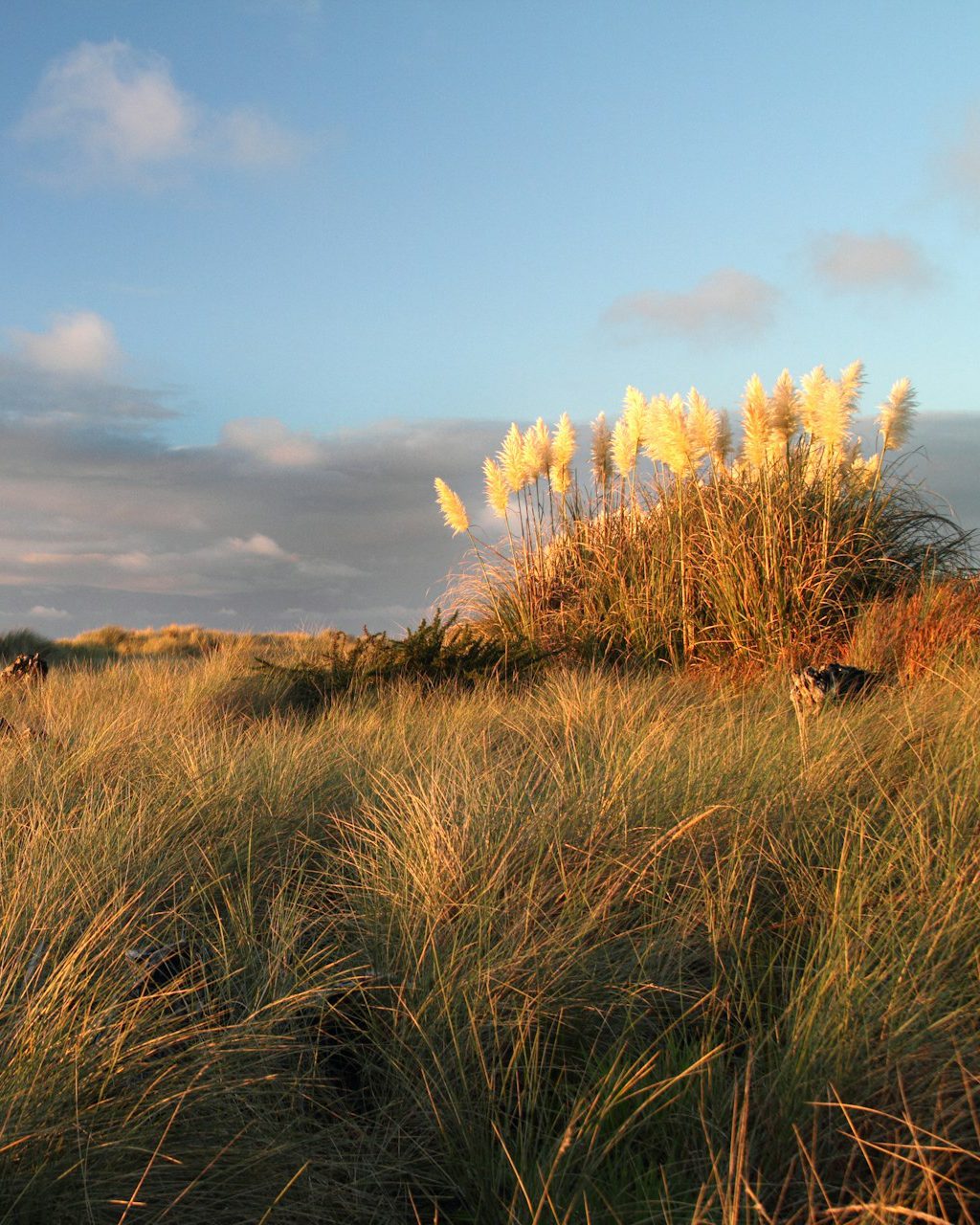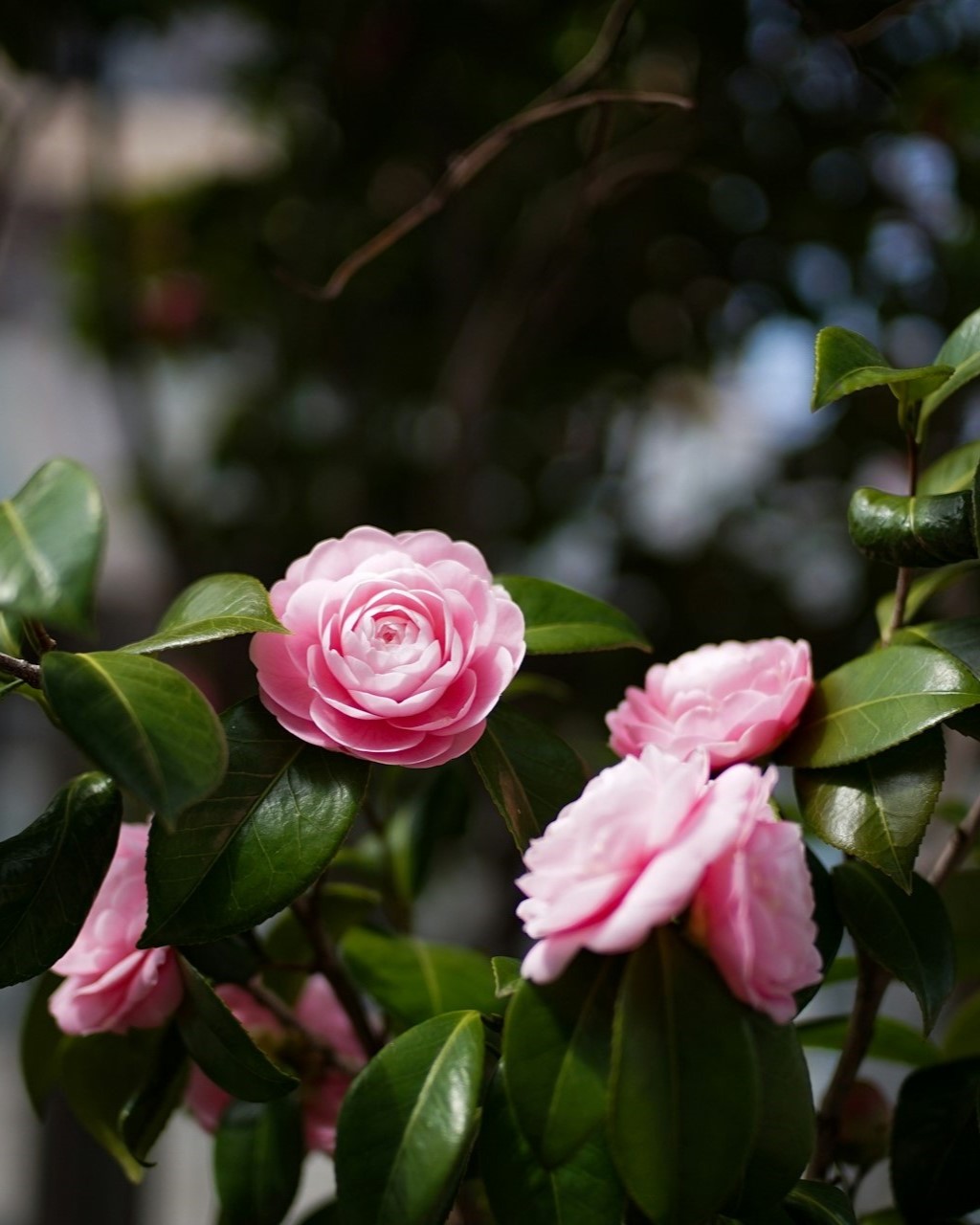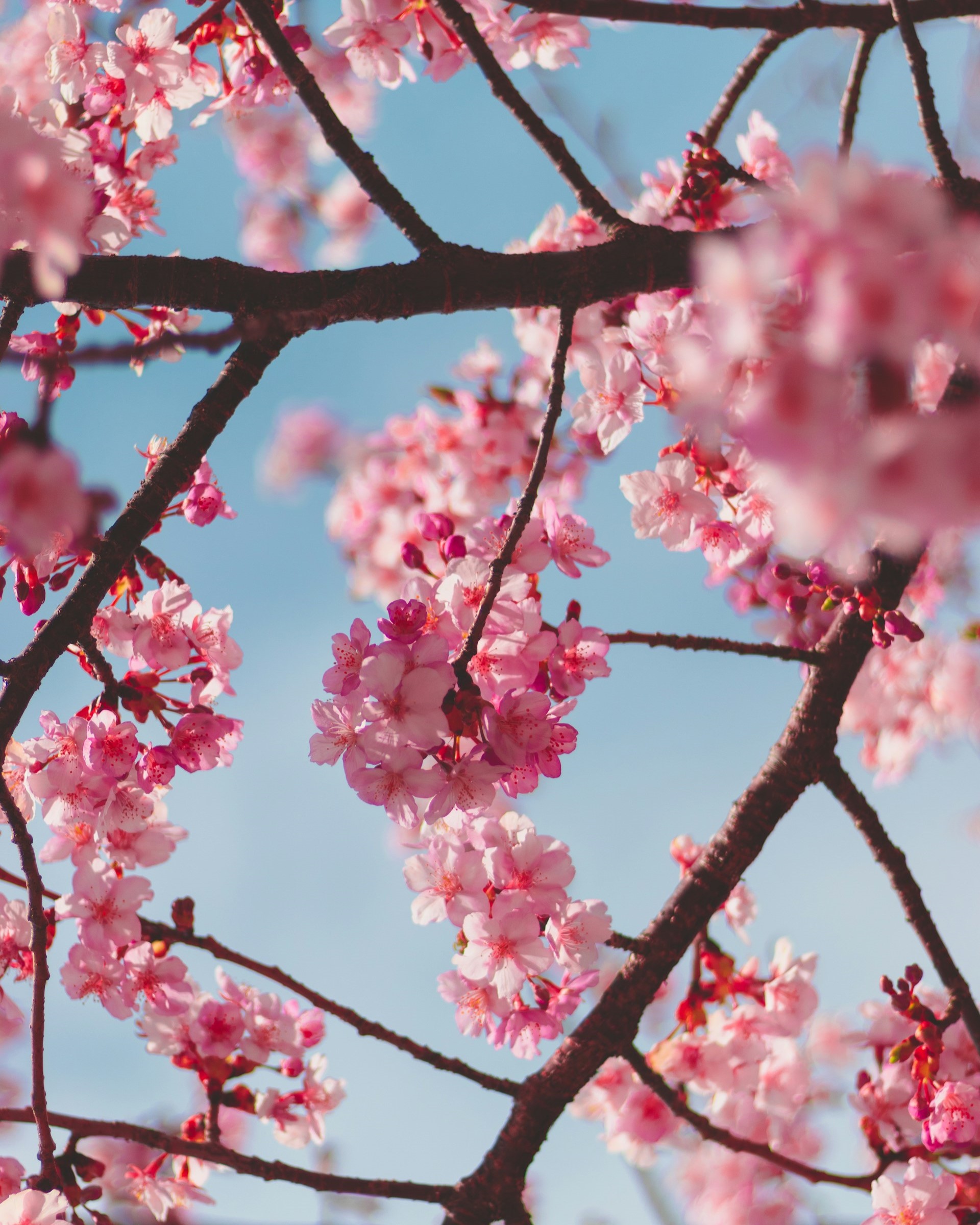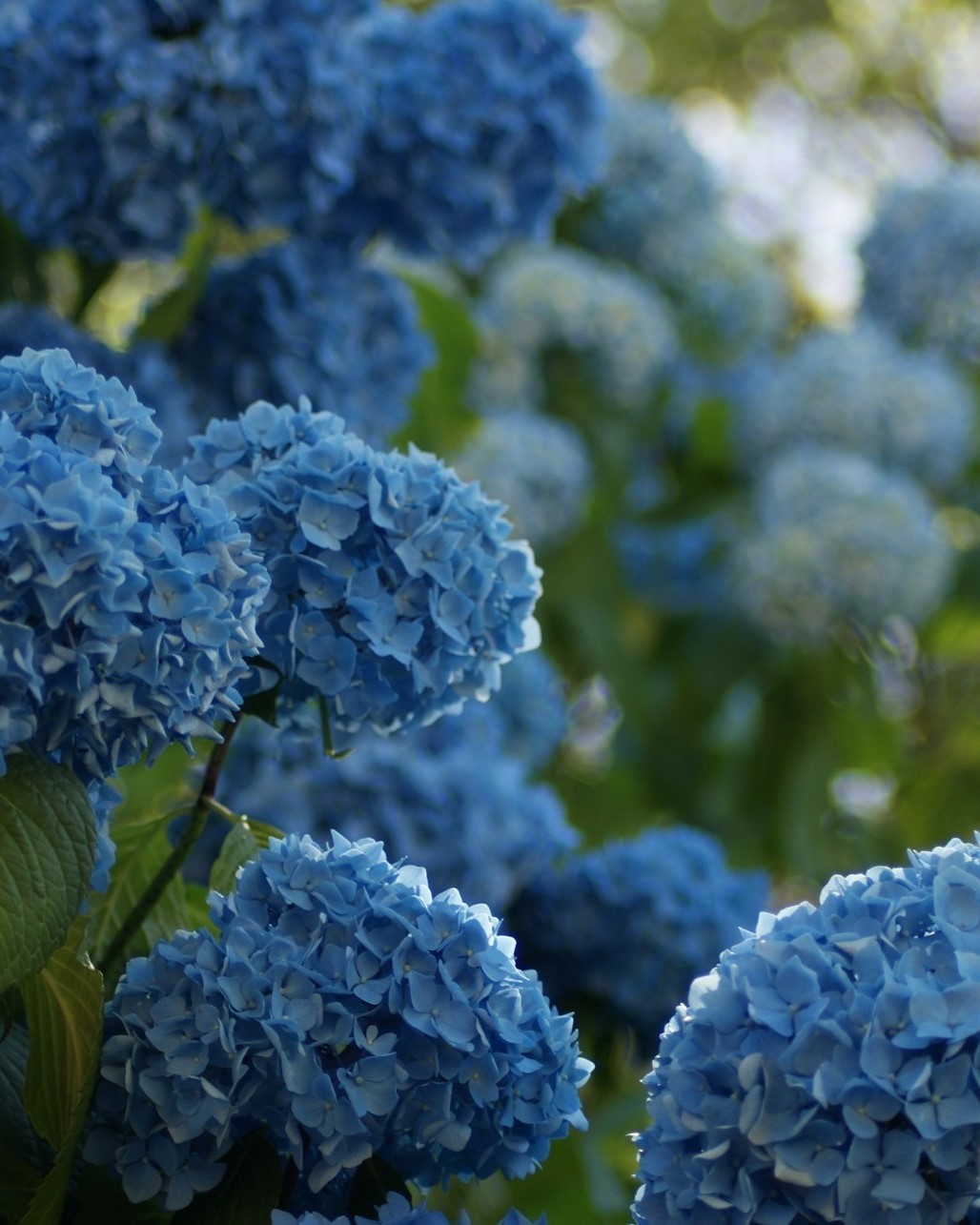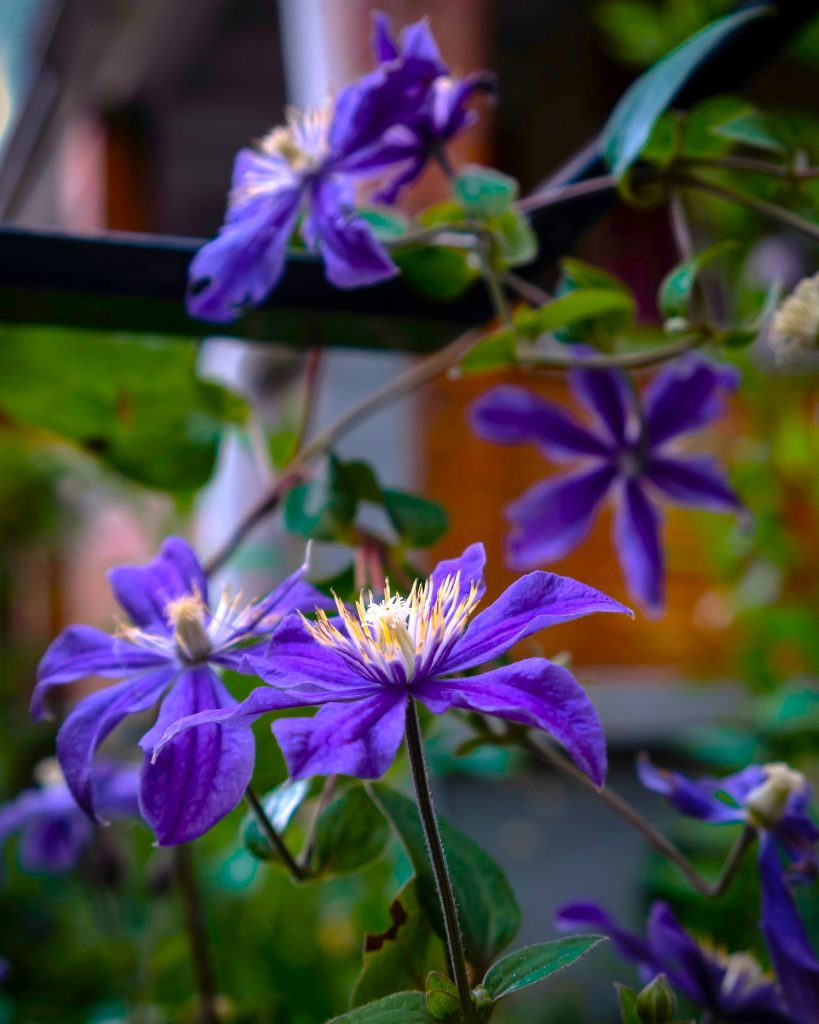
Eleanor Clarke
FLOWERS
Clematis Masterclass
Clematis are gorgeous, colourful flowering climbers, and they say there’s one that will bloom for every month of the year. But we wish the gardening world would be a bit less nerdy about them. All the different groups and pruning times, the shoulds and shouldn’t dos. It’s enough to put you off your breakfast.
Let’s strip away the jargon and make these brilliant plants more accessible and easy to understand. Because they’re well worth getting to know and love.
Most clematis like a degree of shade. All like at least their roots to be in shade. In practice, this means good places to grow the majority of clematis are by a north or east-facing fence, pergola or arbour, to the shady side of a tree or shrub, or anywhere the roots are covered by other plants in summer. Failing that, you can buy special clematis root covers made of terracotta (although a couple of strategically placed tiles would or flat stones do the job just as well).
Clematis tend to be divided up into three different groups, roughly according to flowering time. It’s this that dictates how best to prune them, as some flower on the previous year’s growth, others on the same year’s growth. Get it wrong and you’ll snip off the coming season’s flowers before they’ve even developed. And nobody wants that. Here’s our beginner’s guide:
The Earlies
No mystery here; as the name suggests, these are the ones that flower in winter and spring. They use last summer’s energy and growth for their flowers. Makes sense, then, that if you need to prune them (and it’s not essential with the Earlies), do it not long after they flower. Pruning the Earlies is just a matter of cutting back to the space you’ve allocated and getting rid of any damaged stems. It couldn’t be simpler.
(Aka Group 1 clematis)
Three of the best
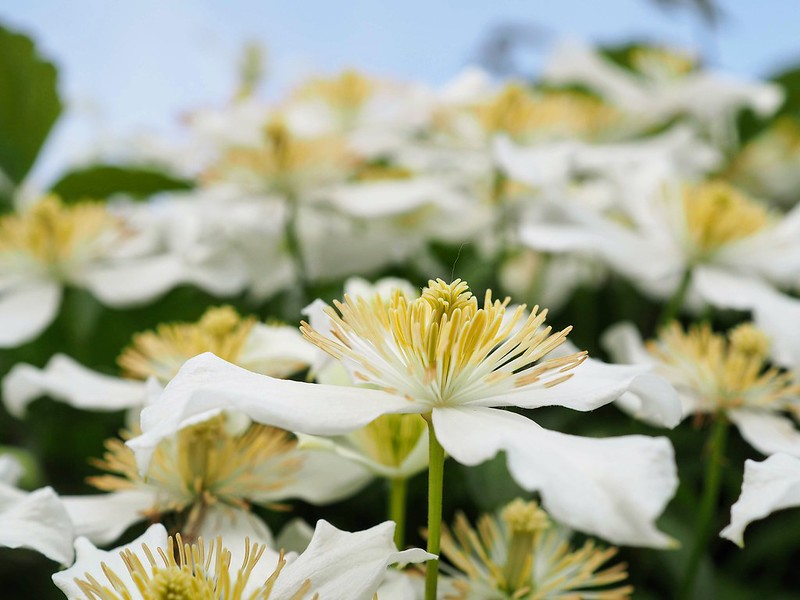
Photo: Gero Brandenburg
Clematis montana var. grandiflora
A large clematis, with a froth of white flowers in spring and spreading up to 10m. It will quickly cover an ugly wall or outbuilding.
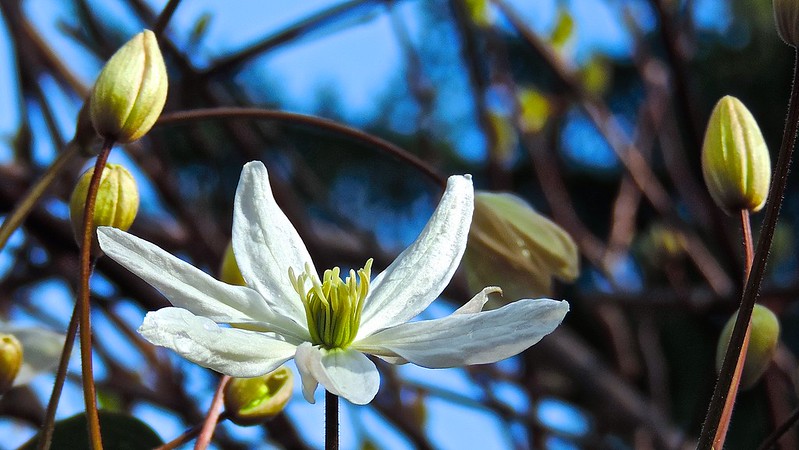
Photo: Peter Stevens
Clematis armandi
Gorgeously scented early spring flowers, star shaped and cream, with glossy evergreen leaves too. To 6m.
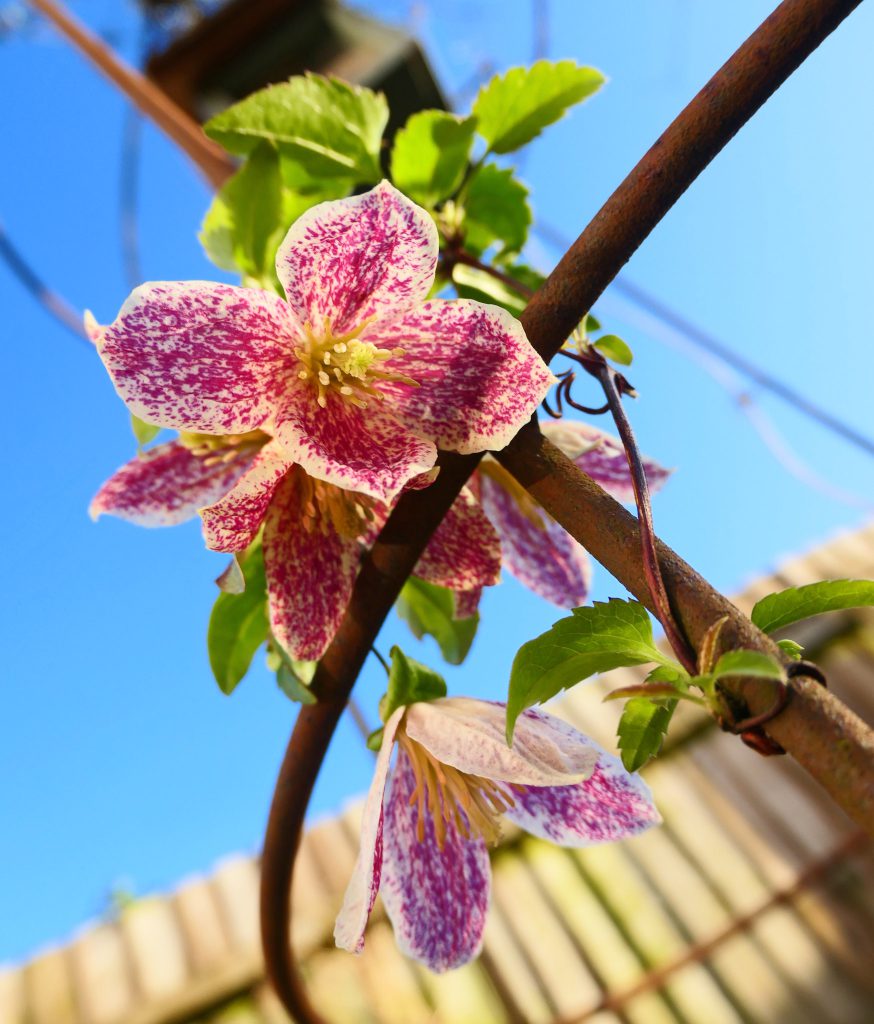
Photo: Amanda Slater
Clematis cirrhosa ‘Freckles’
Up to 4m tall, with sweet mottled pink flowers in winter and evergreen leaves. Brilliant for providing out-of-season nectar for pollinators.
The Biggies
So these are the ones with the big, dramatic flowers, usually in May or June (and again in later summer or early autumn if you prune twice!). Again, these clematis use last summer’s growth for their flowers, but a light prune in February concentrates their energy into a less top-heavy plant with better flowers. Do it by cutting out anything damaged or weak, then pruning back the spindly stems to just above the highest buds.
Take 2: After flowering, prune again, lightly, cutting back some of the stems to large buds or a strong side shoot immediately below the spent flowers.
(Aka Group 2 clematis)
Three of the best
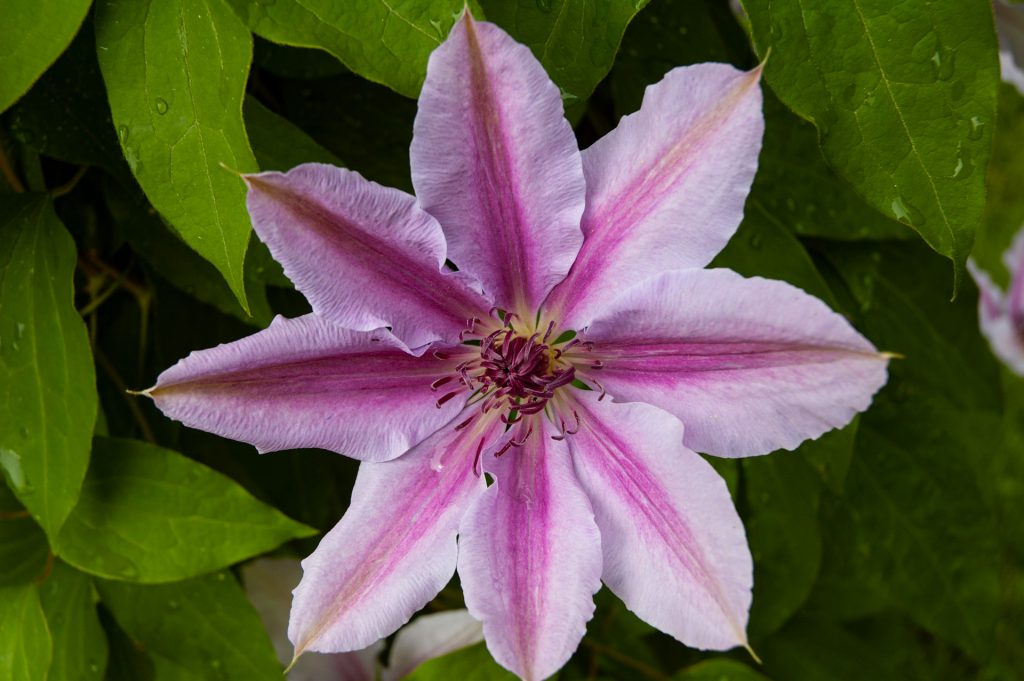
Photo: Ruth H Curtis
Clematis ‘Nellie Moser’
20cm flowers in May and again in early autumn, eight long petals in pale pink with a rose pink stripe along the centre. Up to 2m.
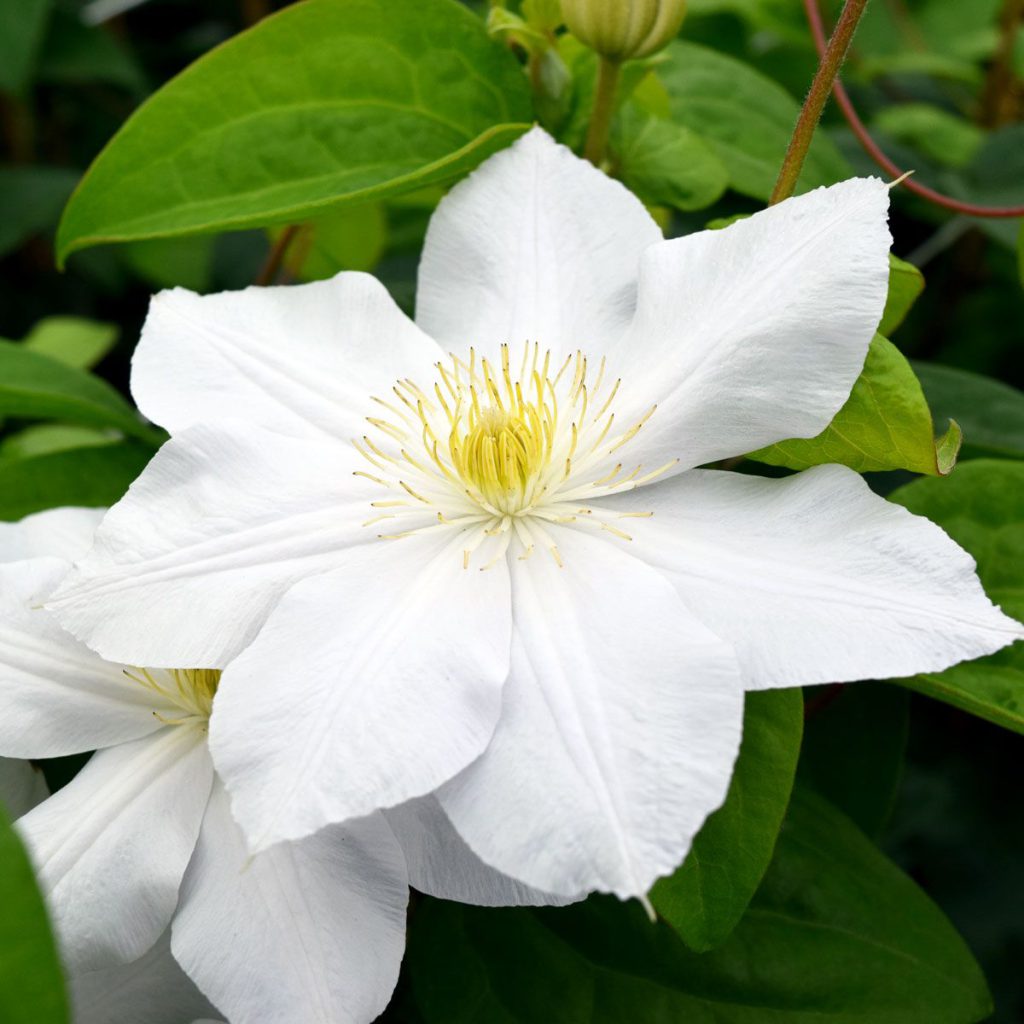
Clematis ‘Marie Boisselot’
Pure-white, satiny 20cm flowers from May to June and again in late summer, up to 4m high.
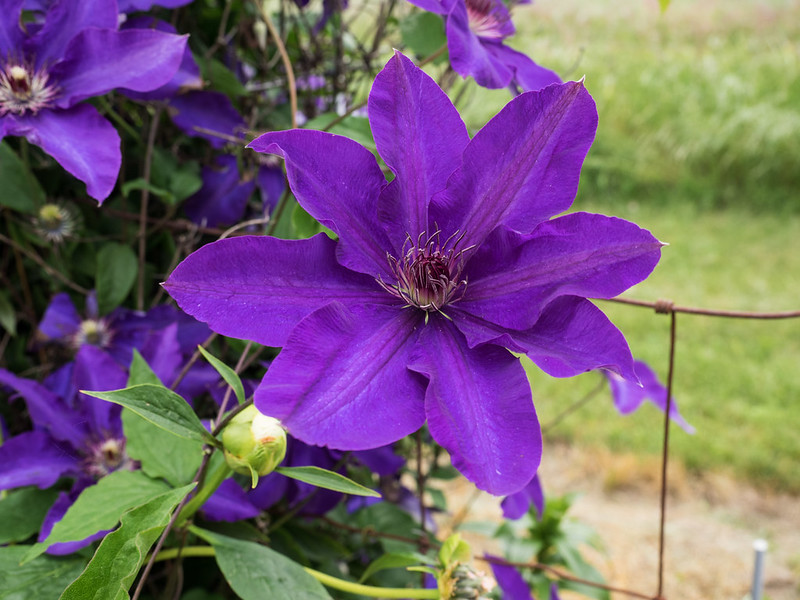
Photo: F. D. Richards
Clematis ‘The President’
18cm lavender-blue flowers from May to June, and again in later summer, to around 2m high.
The Lates
These are clematis such as Clematis tangutica and jackmanii, which flower in mid to late summer, often into autumn (excellent for that late-summer colour gap). A really easy pruning regime for the Lates: cut back absolutely everything in late winter/early spring to 50-60cm from the ground. All the flowers will be produced on the new growth.
(Aka Group 3 clematis)
Three of the best
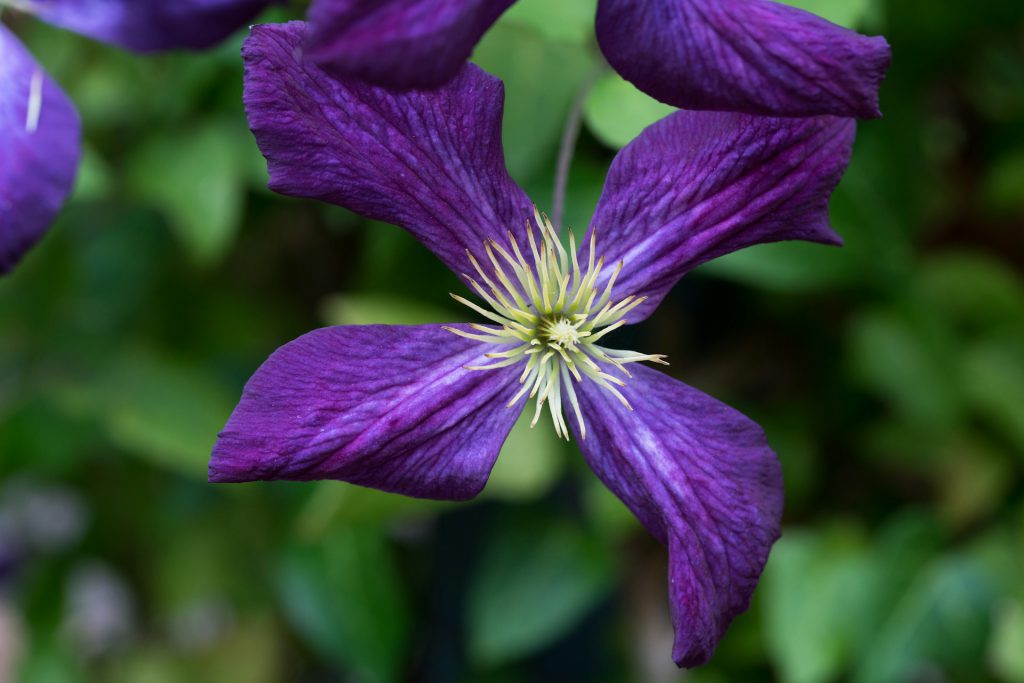
Photo: Jan Sievert
Clematis viticella ‘Polish Spirit’
To 4m high, with a huge mass of deep purple flowers, which last all summer and into September.
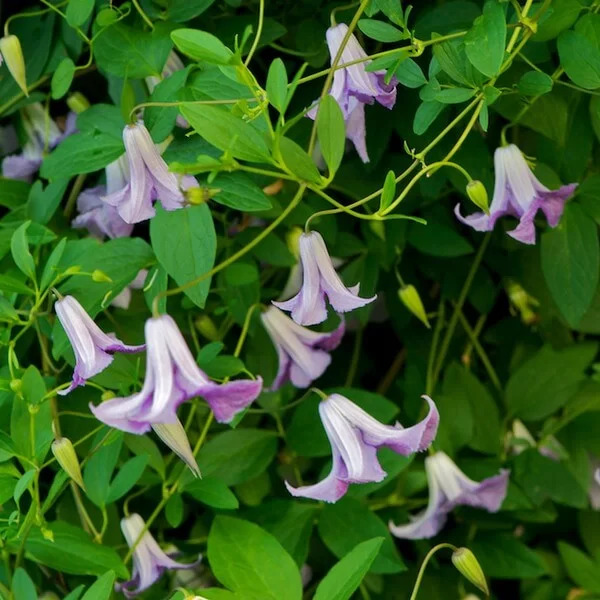
Clematis ‘Hanna’
From July to September, heaps of pretty bell-shaped nodding flowers in pale lilac. To around 3m in height.
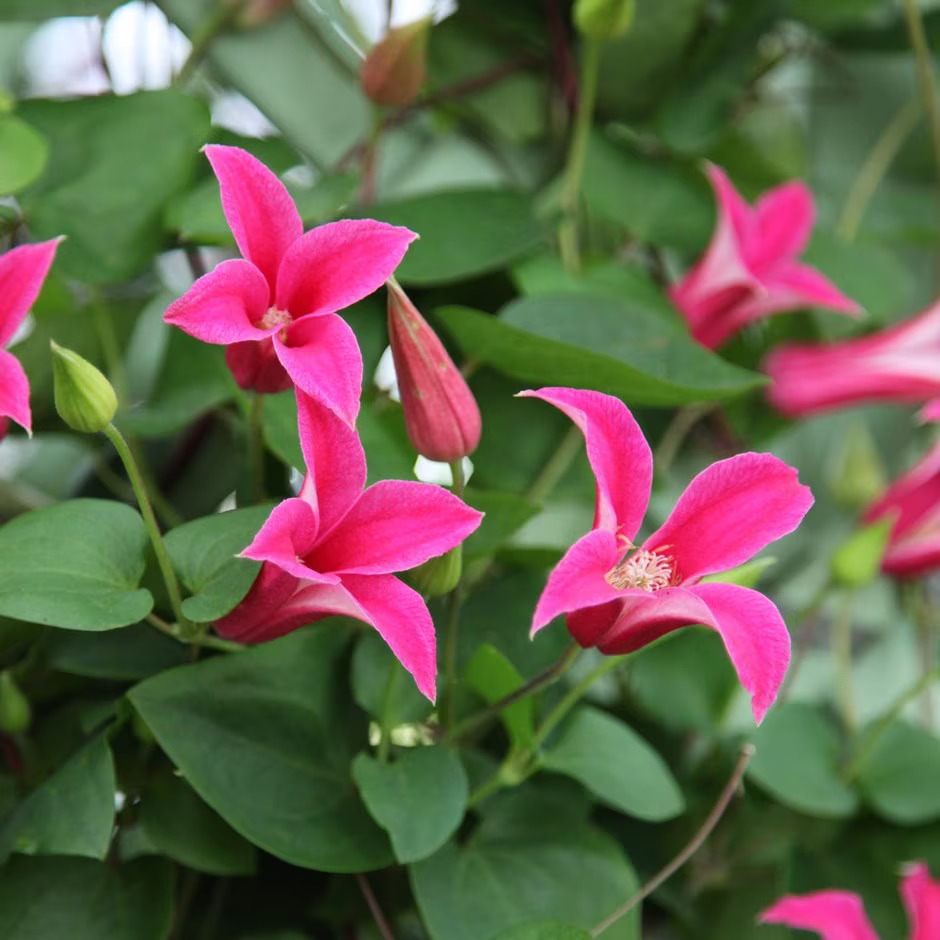
Clematis ‘Princess Diana’
To 2m in height, with vivid fuchsia-pink tulip-shaped flowers from July to September.
Read more:
OUTDOOR PLANTS
FLOWERS
FLOWERS
OUTDOOR PLANTS
Shop from this story:
